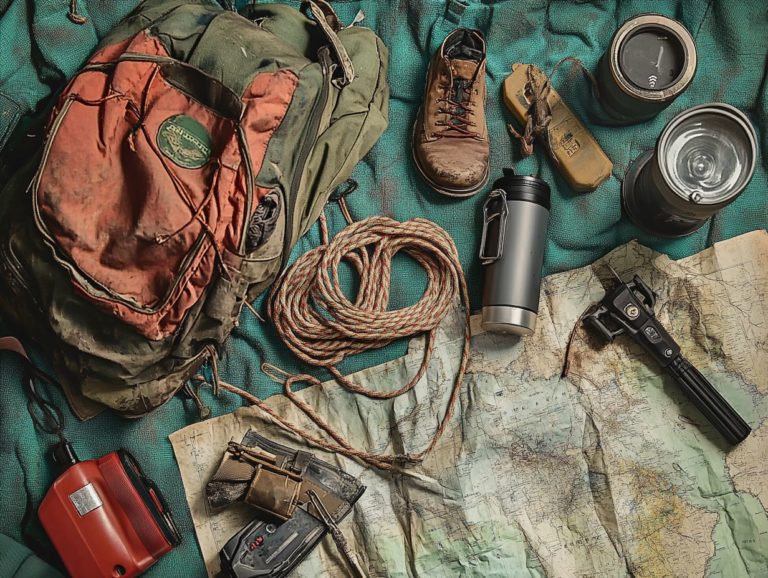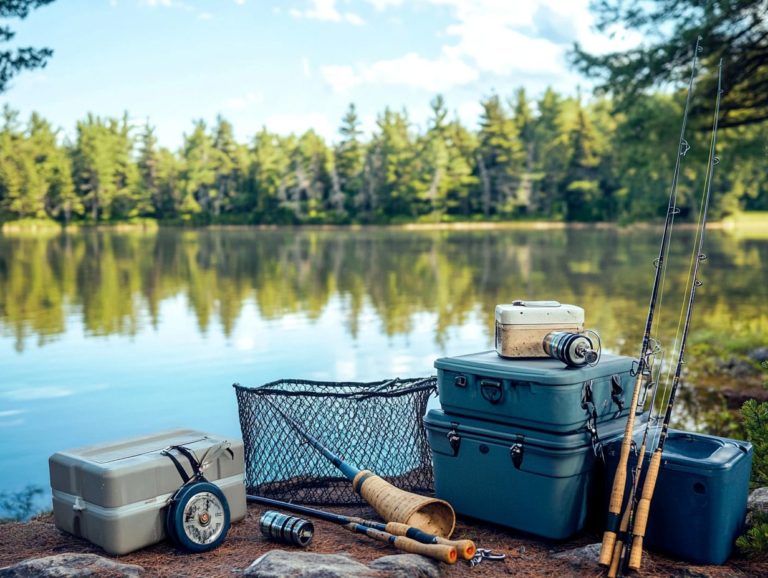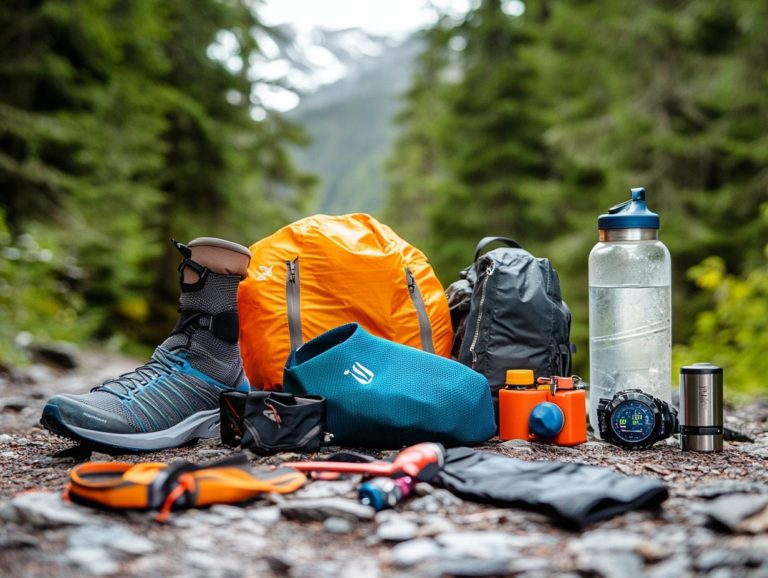What is the Role of Base Layers in Outdoor Clothing?
Base layers are the secret to enjoying the great outdoors, keeping you comfy and protected on every adventure! They are essential for maintaining your comfort and protection across a range of outdoor activities.
From regulating your body temperature to managing moisture and shielding you from the elements, grasping the importance of base layers and their functionality can truly enhance your outdoor experience. Don’t underestimate the power of the right base layer; it can make or break your outdoor experience.
This article delves into the benefits of various base layer types, offers guidance on selecting the right fit and fabric, and shares essential care techniques to ensure these garments serve you well for years to come.
Contents
Key Takeaways:
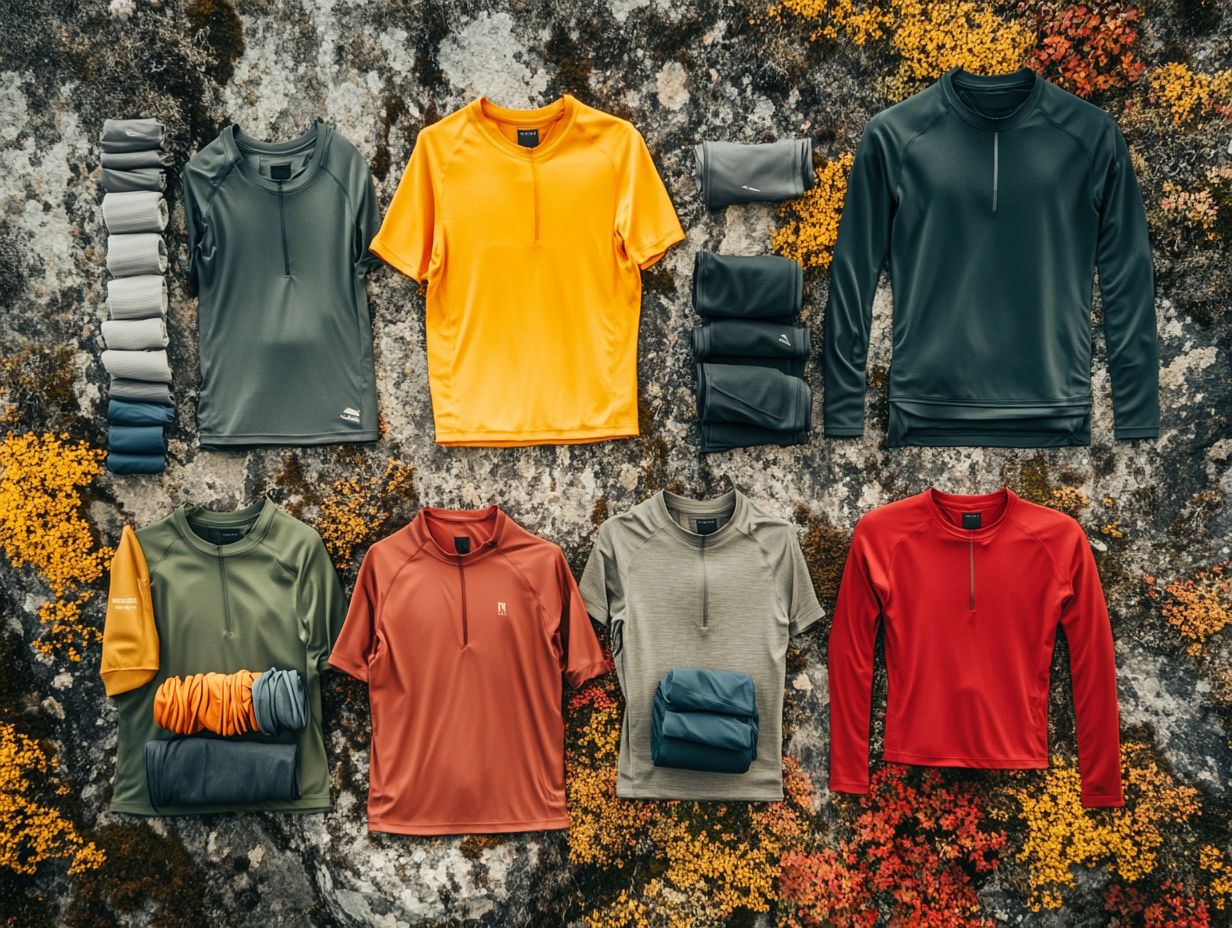
- Base layers form the base of your outdoor clothing, regulating temperature and managing moisture.
- Choose base layers based on your activity and preferences.
- Proper care extends the lifespan and effectiveness of your base layers.
Understanding Base Layers
Base layers are important parts of your performance gear, offering insulation, pulling moisture away from your skin, and temperature regulation for all your outdoor pursuits. Think of them as your first line of defense against the elements, elevating your comfort and functionality in diverse conditions whether you’re braving the chilly Alaskan wilderness or enjoying sunny hiking adventures.
The right base layer can profoundly influence your comfort during outdoor excursions, whether you’re skiing in Colorado or trekking through the mountains. Crafted from premium natural fibers like merino wool or cutting-edge synthetic materials, these layers are designed for both durability and breathability, ensuring you remain dry and warm no matter the season.
What are Base Layers?
Base layers are the essential garments you wear closest to your skin, crafted to provide both insulation and moisture-wicking properties. These essential pieces of clothing work tirelessly to regulate your body temperature, allowing you to stay warm during chilly excursions while effectively managing perspiration during more intense activities.
By creating the perfect microclimate, base layers keep your skin dry, significantly reducing the risk of chills in damp or cold conditions. They play a crucial role in your overall comfort, minimizing friction and irritation that could detract from the enjoyment of your outdoor adventures.
With their thoughtful design, base layers are a vital component of a multi-layered approach to outdoor apparel, enabling you to tackle diverse conditions with unwavering confidence.
Benefits of Wearing Base Layers
Wearing base layers offers numerous benefits, such as improved moisture management, effective temperature regulation, and a heightened level of comfort during your outdoor adventures.
Temperature Regulation and Moisture Management
Effective temperature regulation and moisture management are essential for your outdoor performance, and the choice of base layer materials plays a pivotal role in this equation.
Merino wool is a standout option, renowned for its natural breathability and thermal properties. It keeps you warm in chilly conditions while allowing heat to escape as your activity intensifies, which is crucial for preventing cold-related illnesses. Alternatively, synthetic fabrics are engineered with moisture-wicking capabilities that excel at pulling sweat away from your skin, promoting quicker evaporation.
This combination of materials enhances your comfort and endurance during outdoor sports activities. By understanding the science behind moisture management specifically how different fabrics interact with sweat you can make informed choices when selecting the right base layers. This knowledge ultimately leads to improved performance in a variety of environmental conditions.
Choose wisely and enjoy your outdoor adventures with comfort and confidence!
Protection from the Elements
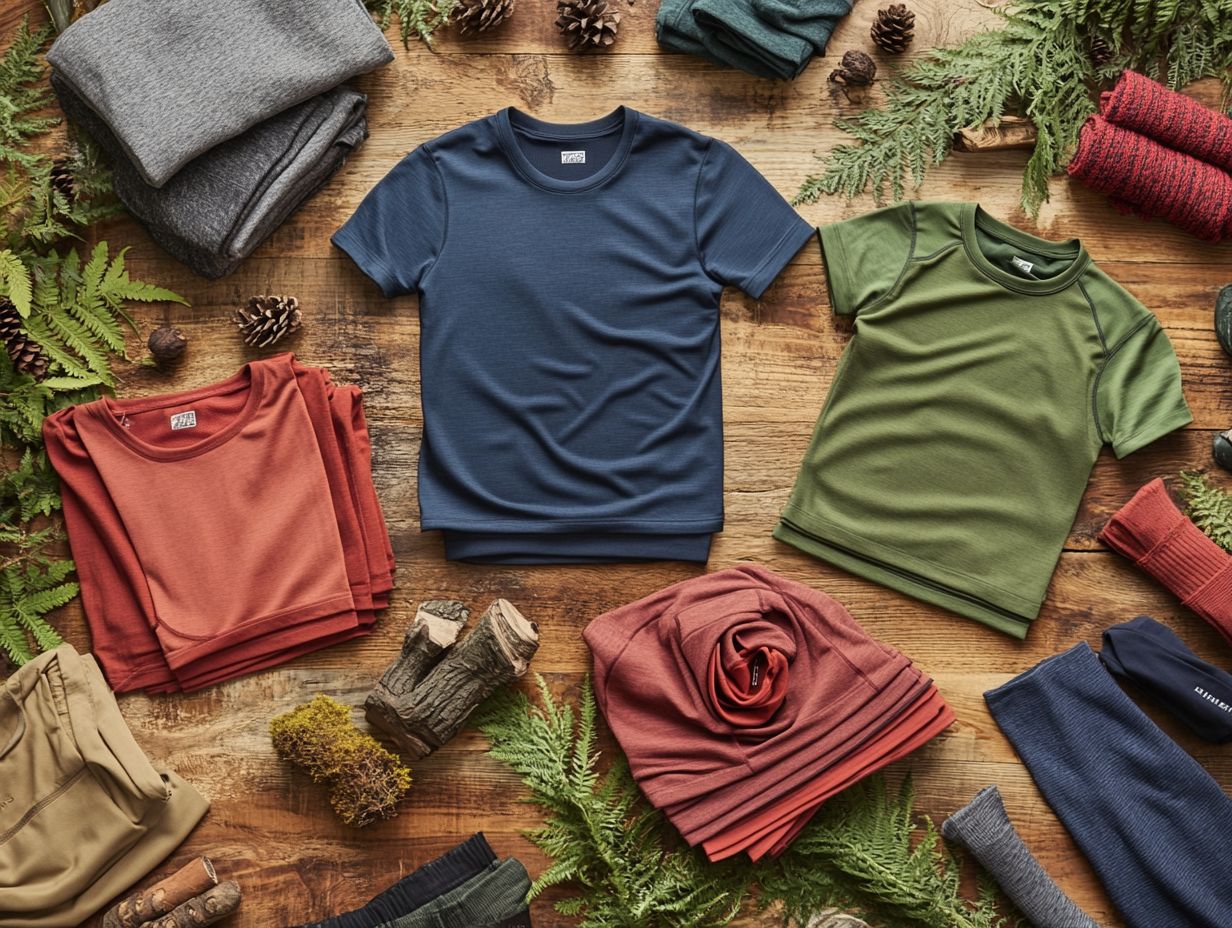
Base layers aren t just about comfort; they are your first line of defense against the elements during those chilly outdoor escapades.
Think of these garments as a protective shield against biting winds. They keep the cold at bay while efficiently pulling moisture away from your skin to prevent frostbite and discomfort.
When temperatures plummet, insulation takes center stage. It traps heat close to your body, allowing you to move freely without sacrificing warmth.
Durability is essential. A well-constructed base layer can withstand even the most rigorous movements and environmental challenges. This ensures it stands the test of time and delivers consistent performance.
Whether you re hiking through snow-covered trails or braving brisk winds while climbing, the right base layer technology enhances keeping your body warm and comfortable. This lets you focus on your adventures without the nagging distraction of the cold.
Types of Base Layers
Base layers are available in an array of options, each meticulously crafted to suit various activities and personal preferences.
You’ll commonly find them made from luxurious merino wool, high-performance synthetic fabrics, and eco-friendly bamboo. These materials ensure both comfort and functionality for your pursuits.
Materials and Construction
The materials and construction of base layers significantly influence their performance characteristics. Key attributes include breathability, ability to pull moisture away from your skin, and overall durability.
Among the most sought-after options is merino wool. It is renowned for its natural temperature regulation and delightful softness against the skin. This makes it perfect for a variety of weather conditions.
On the flip side, synthetic materials often excel in moisture management. They allow for quick drying during intense physical activities.
Then there’s bamboo fabric, which stands out as an eco-friendly alternative. It offers impressive breathability and odor resistance.
Each material’s unique construction plays a crucial role in how well it performs across different environments. This ensures your base layer experience is tailored for activities like hiking, skiing, or simply enjoying a relaxing day outdoors.
Choosing the Right Base Layer
Choosing the right base layer can make or break your outdoor adventure! It requires thoughtful attention to fit, fabric selection, and your unique requirements for outdoor pursuits.
Fabric Selection and Fit
The fabric selection and fit of your base layer can profoundly impact your overall outdoor experience. They ensure you stay warm while maintaining breathability.
Choosing between merino wool and synthetic materials is crucial for managing moisture effectively. Merino wool naturally regulates temperature and pulls moisture away, making it perfect for varying conditions.
On the other hand, synthetic fabrics shine in durability and quick-drying capabilities. This is essential for high-intensity sports or extended outdoor adventures.
A close fit is vital. It allows these fabrics to perform at their best, facilitating efficient moisture transfer and enhancing warmth regulation.
Whether you’re hiking, skiing, or enjoying more relaxed outdoor activities, selecting the right fit and fabric guarantees that your comfort and performance are fully optimized.
Considerations for Different Activities
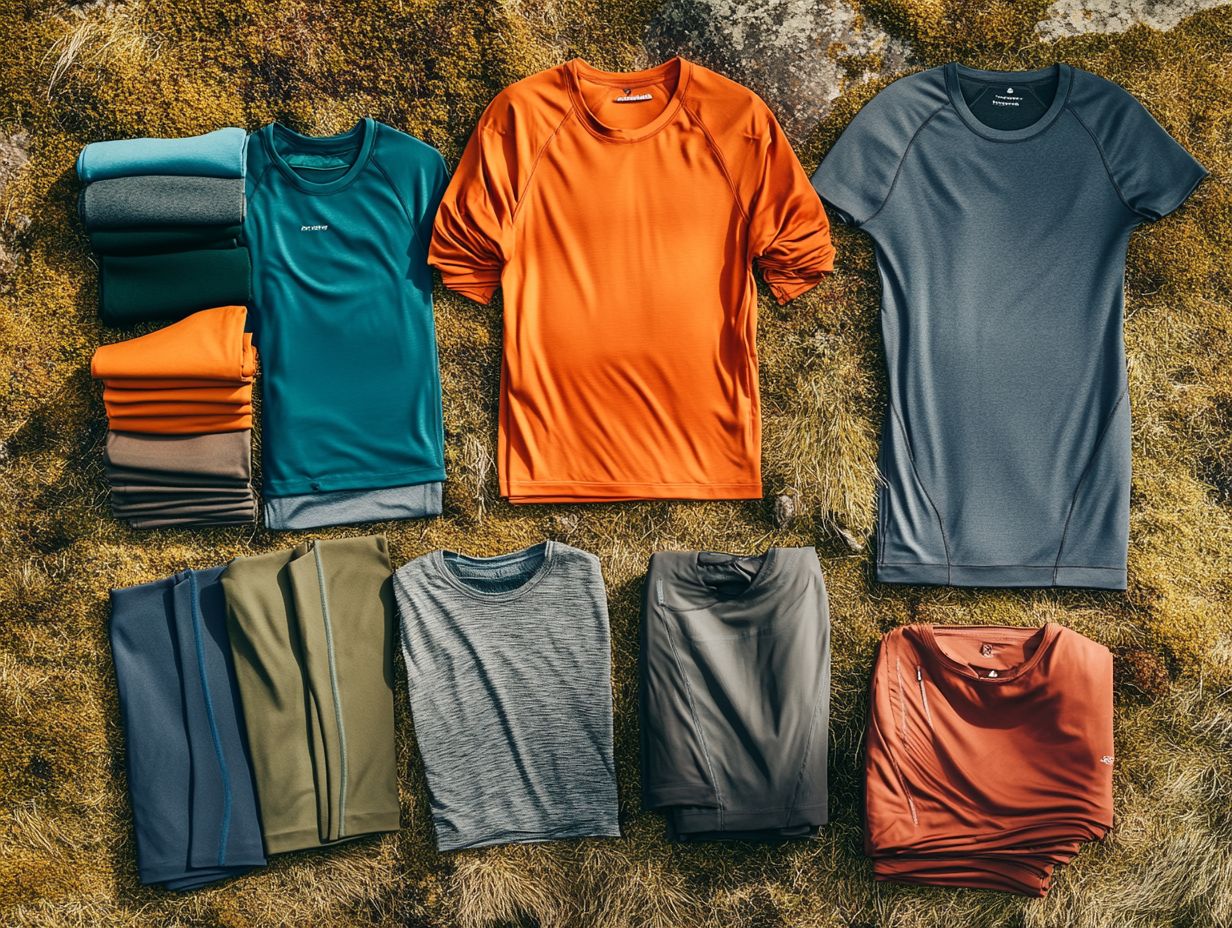
When you’re selecting a base layer, it’s crucial to think about the specific activities you plan to pursue. Each outdoor adventure demands different levels of performance and insulation tailored to your needs.
For a warm summer hike, for example, you’d want a lightweight base layer that excels in moisture management to keep you dry and comfortable.
On the other hand, if you’re hitting the slopes in frigid conditions, a thicker option is essential for superior insulation. It traps warmth while still allowing for breathability.
When camping, consider that your base layer needs to adapt to fluctuating nighttime temperatures. It should provide just the right amount of warmth without causing overheating during the day.
Each activity presents unique challenges in how your body regulates temperature. Understanding these factors is key to making the right choice.
Caring for Base Layers
Caring for your base layers is vital for maintaining their performance and durability. Use specific washing and storage methods to keep them in optimal condition.
Proper Washing and Storage Techniques
To extend the life of your base layers, including merino wool and silver-infused fabrics, adopt proper washing and storage techniques. Wash these garments at lower temperatures, ideally around 30 C, to maintain their elasticity and moisture management.
Choose a gentle detergent made for technical fabrics. Avoid bleach and fabric softeners that can damage the material. Air drying is best, as heat can warp the fibers and affect the fit.
Store your base layers in a cool, dry place away from sunlight to prevent fading. Folding them neatly rather than hanging can help maintain their shape for many adventures to come.
Frequently Asked Questions
What is the Role of Base Layers in Outdoor Clothing?
Base layers provide a foundation for your outfit, keeping you comfortable during outdoor activities. They help regulate your body temperature and wick away moisture, especially in cold conditions.
Why do I need to wear base layers?
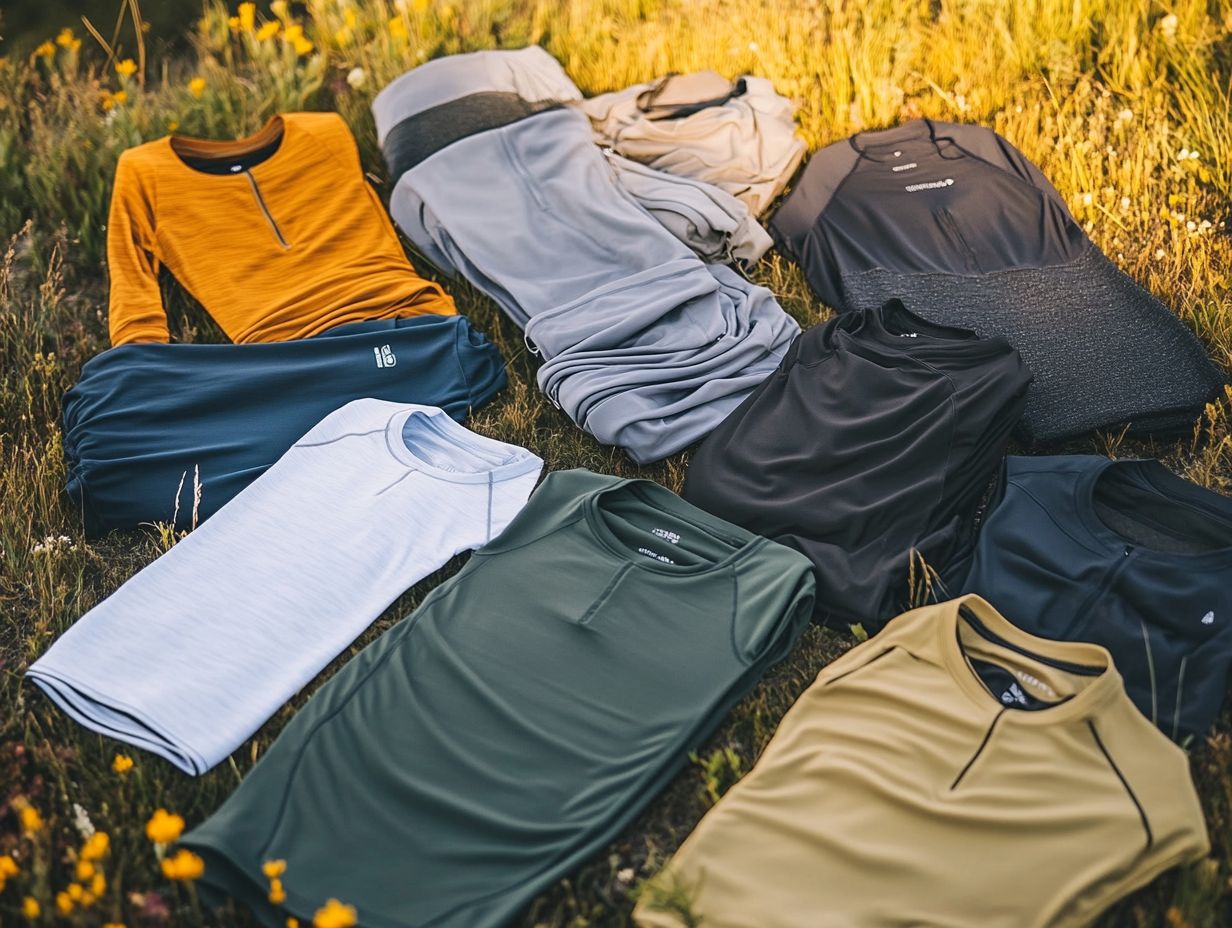
Base layers serve several purposes: they regulate body temperature, wick away sweat, and provide insulation. They are crucial for comfort and protection during outdoor adventures.
What materials are used to make base layers?
Common materials for base layers include merino wool, polyester, and nylon blends. Merino wool offers natural temperature regulation and odor resistance, while synthetic fabrics excel at moisture management.
Additionally, some brands utilize silver-infused fabric and recycled fibers to enhance durability and performance.
What types of base layers are available?
There are three main types of base layers: lightweight, midweight, and heavyweight. Lightweight layers are perfect for high-intensity activities, while midweight and heavyweight options provide extra warmth for cold conditions.
Brands like Smartwool and Patagonia offer some of the warmest options for winter, ensuring versatility and comfort for your outdoor adventures.
Can base layers be worn in warm weather?
Yes, you can wear base layers in warm weather! Look for lightweight fabrics that pull sweat away from your skin to stay cool and dry during activities like summer hiking.
How should I care for my base layers?
To keep your base layers in great shape, follow the manufacturer’s care instructions. Wash them in cold water and skip the fabric softeners and bleach.
Hang-dry your layers to avoid shrinking or damaging materials like merino wool and bamboo, which help prevent odor.

